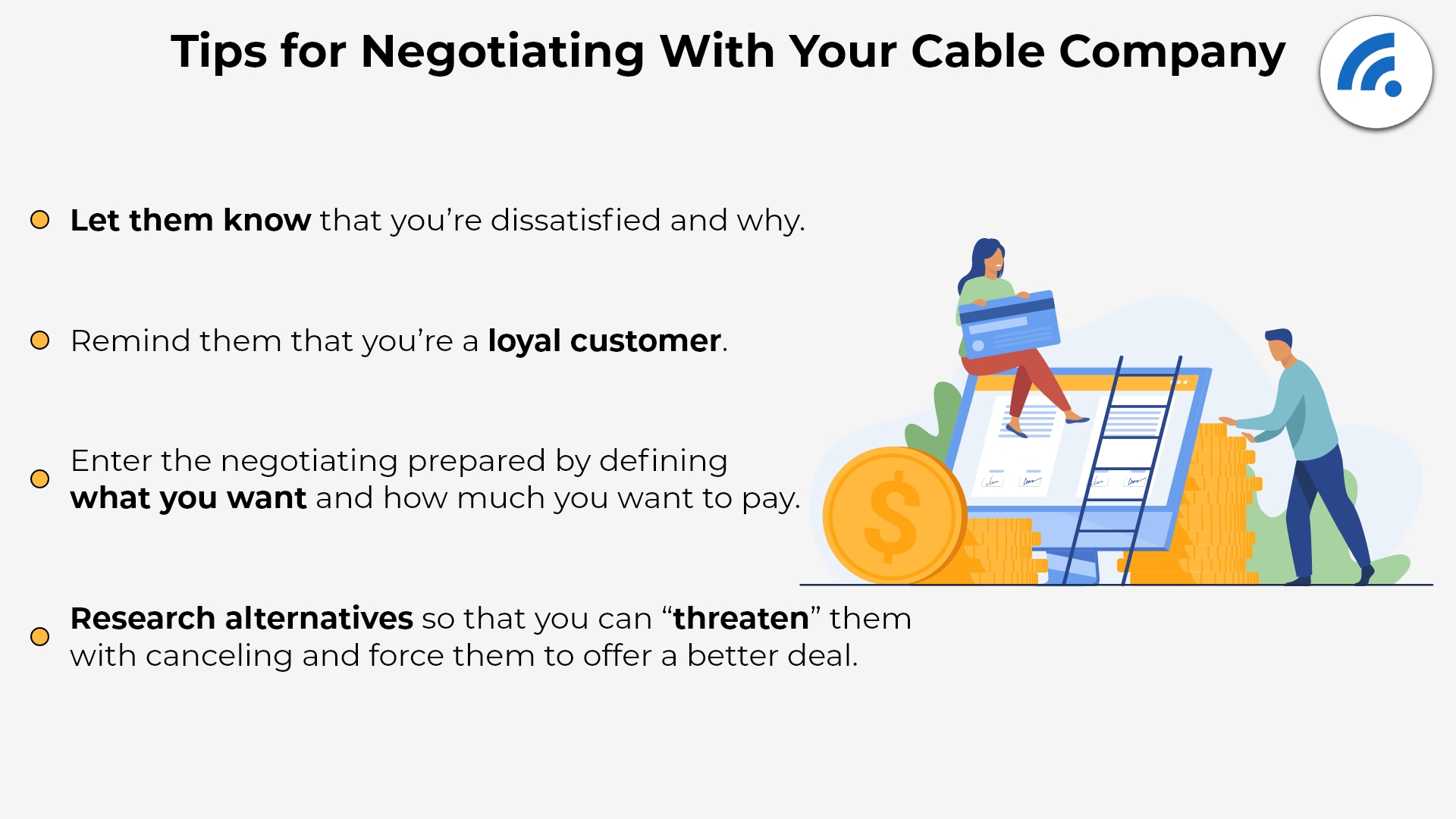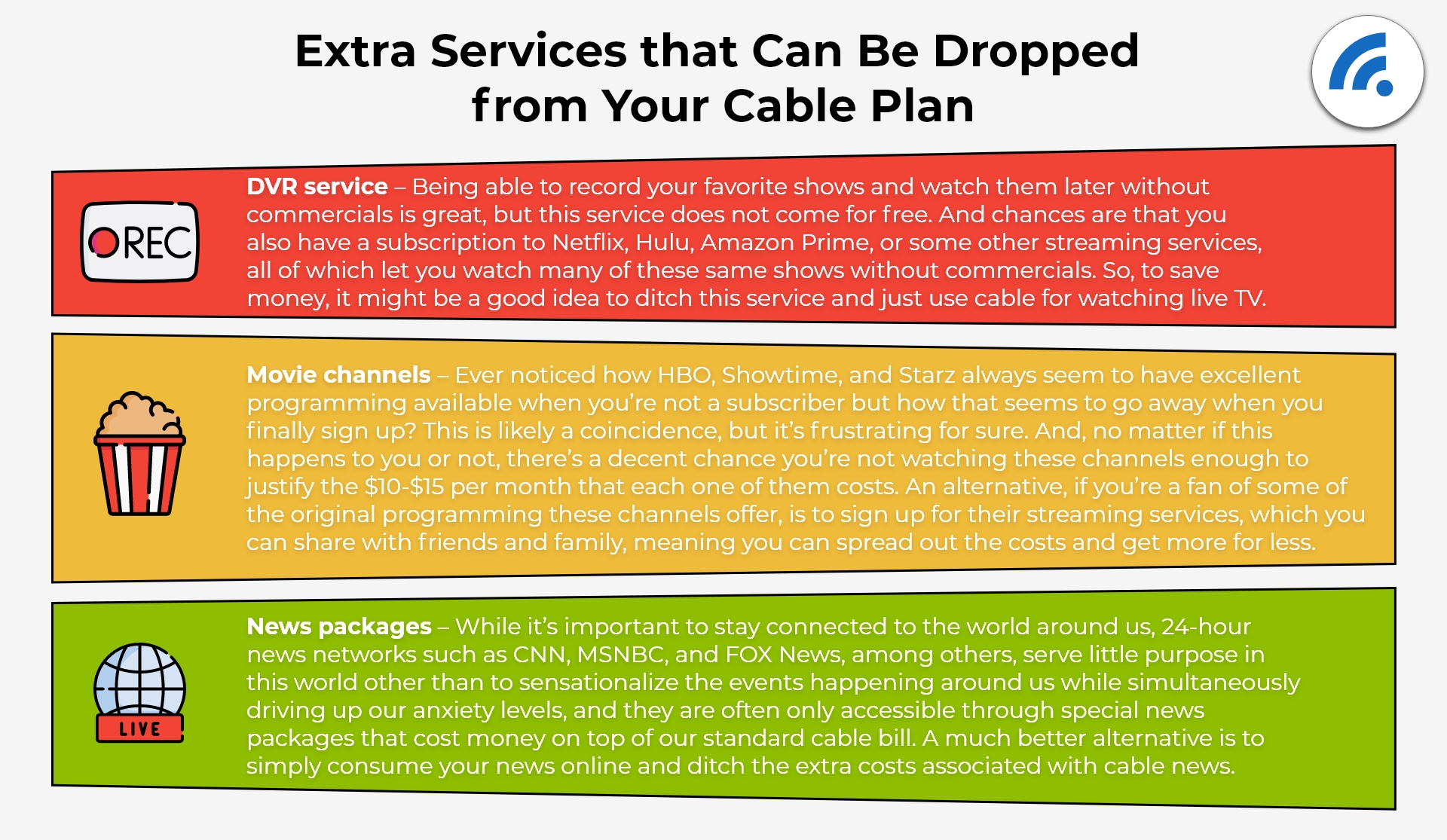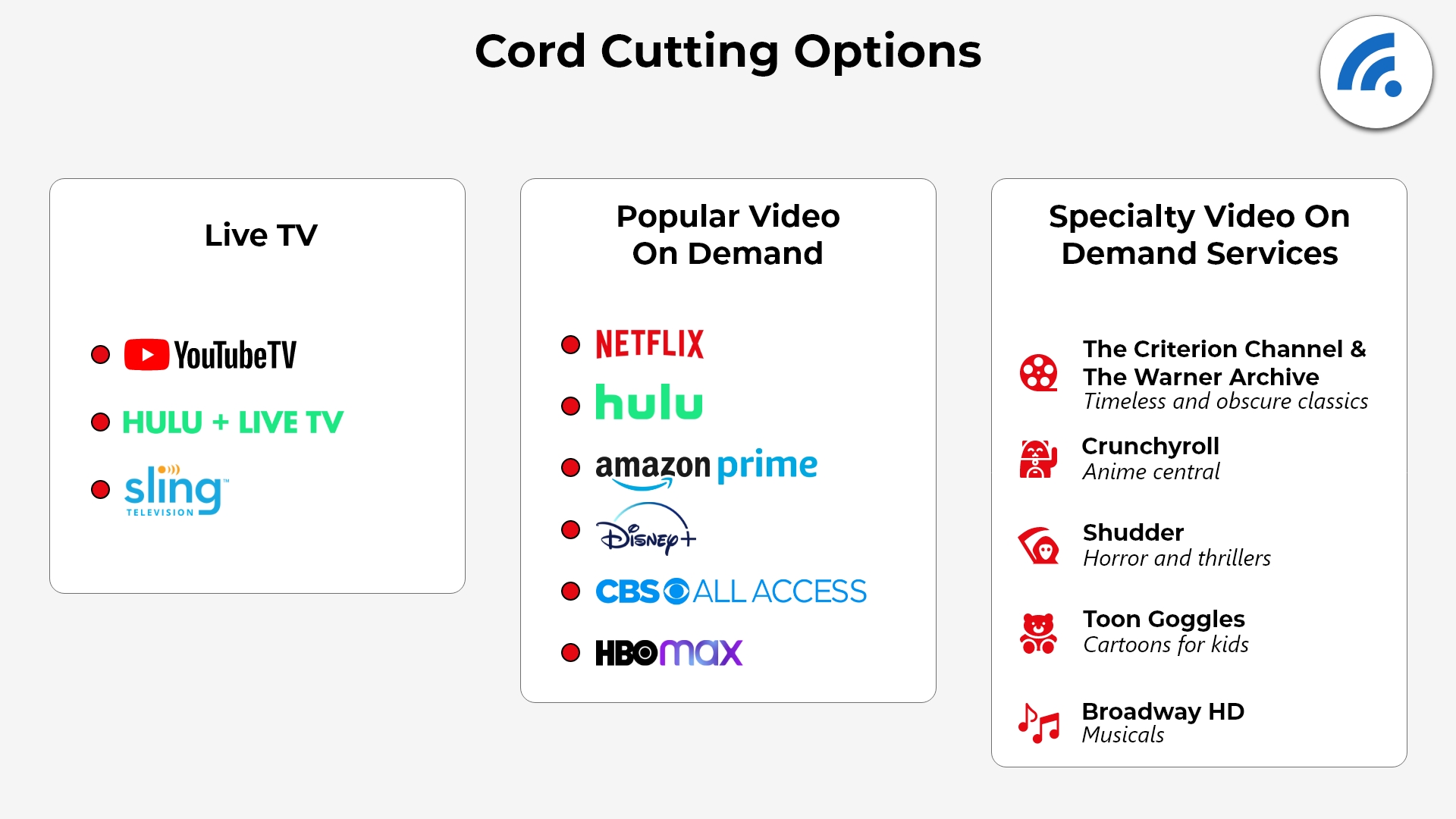Everyone wants to save money on their monthly bills, but how to do that - and avoid excessive sacrifices - isn't always straightforward. Of course, there will be times when you need to accept some cuts if you want to save cash. However, there are ways for you to have your cake and eat it too.
When it comes to your cable bill, it's completely normal to want to save money. The average price of a cable TV subscription is around $107, and this number has been growing quickly over the past few decades. In fact, the price of a cable TV subscription has outpaced inflation by about 200 percent over the past 20 years. This has caused many people to rethink their decision to subscribe to cable, leading to the cord-cutting revolution that we're living through today.
Ditching cable altogether will undoubtedly reduce your monthly expenditures, but it will also deny you access to television entertainment, a sacrifice most of us aren't willing to make. As a result, before you make this decision and subject yourself to undue hardship, you should consider taking some steps to reduce how much you spend each day on cable TV, which we've outlined in detail below.
Here are various different ways you can try to save money on your cable TV bill:
Negotiate With Your Cable Company
If you feel you are spending too much money on cable, then the first thing you should do is call up your cable provider to let them know your dissatisfaction. Yes, cable companies don't have a tremendous record when it comes to customer service, but, in the end, they are for-profit companies. They are not in the business of letting their clients get so unhappy that they eventually want to cancel their service altogether.
 If and when you decide to call your cable provider, make sure you go into the call with an idea of what you want, either in terms of price or service. Also, think about what you might be willing to give up from your current subscription.
If and when you decide to call your cable provider, make sure you go into the call with an idea of what you want, either in terms of price or service. Also, think about what you might be willing to give up from your current subscription.
However, don't assume that you must be willing to settle for less just because you want to spend less money. For example, you may be able to convince them to add things to your plan without raising prices, which admittedly doesn't save you money but at least adds value to your plan.
One thing you will definitely want to do is prepare yourself for negotiation by exploring other options. Saying something such as "Company B will give me the same service for 25 percent less, so I am thinking of switching to them," will likely scare your company enough into offering you something better. But if you call up and have no idea what else is out there, it's much easier for them to tell you that there are no other options and that you are already getting "the best possible price."
Overall, the most important thing to do is arm yourself with information to be a demanding negotiator who won't take no for an answer. This approach will lead to satisfaction and savings.
Drop Extra Services
Calling up your cable company to negotiate is one way of saving on your monthly bill, but it's also definitely part of the "have your cake and eat it too" approach. This might work, but there will come a point when it is no longer effective, or you may find that the savings you're being offered simply aren't enough.
If this is the case, then you might want to get ready to drop some services from your plan. Here are a few that most people think are necessary but in reality aren't:

There may be other things you can cut from your bill, so if you're looking to save money, make sure you comb through your subscription plan and think carefully about how much you use each thing. Any service that gets just modest use should be considered an extra and subject to elimination as part of your cost-saving effort.
Cut Equipment Fees
Another way to save money on your cable bill is to reduce the amount you spend each month on equipment. These additional costs are not usually explicitly explained to you when you sign up for a plan, yet they can add up rather quickly and, over time, can cost you quite a bit of money.
The two most significant equipment fees to consider are your modem fees and your box fees. Modems are required to bring the cable signal into your home, and they are necessary for you to get service. However, you don't own these devices but instead rent them from the cable company, usually for anywhere between $10-$20 per month. This isn't a significant expense in the short term, but if you think about how long you have had cable, you've likely spent hundreds if not more on a device that you never owned.
So, if you plan to keep subscribing to cable in the future, then it might be a good idea to buy one so that you can decline these rental fees and save some money. Of course, this is more of a long-term strategy since you will need to spend around $100 for one of these devices, and it will take around a year to recoup this expense.
Cable Boxes
Another thing you can do to save on equipment fees is to drop the extra boxes you use. Most of us who have cable have signed up to have boxes in all the different rooms where we watch TV, but how many of us watch the same amount of television in all of these places?
Usually, we use one TV for almost everything, and the others are rarely used, yet we continue to pay for these additional boxes. Each box usually costs around $5-$10 per month, so if you can go from three down to one, that's anywhere between $10 and $30 in savings per month. These savings can make a huge difference and help you feel that you're spending a much more reasonable amount on your cable bill.
Switch Providers
Never forget that to save money on your cable bill, you don't need to stick with the same provider you're using now. There are likely to be many instances in which the only way to save is to switch.
Cable providers are notorious for using promotional pricing, which are pricing plans that look great when you sign up, are designed to increase with time. This is why there is always an asterisk next to the price listed for a particular plan.
Usually, the promotional price lasts for a year, though sometimes it goes for two, and then after that, you can expect to pay a solid 20-30 percent more for the same service. Unfortunately, it's unlikely you will be able to get this price back since it's reserved for "new" customers. Cable companies will argue that the higher price is the "actual" cost of the service and that the promotional price is simply a special deal for signing up, but this is pretty much entirely false. When negotiating for a better price, you can try to get this promotional price back, but we doubt it will happen.
As a result, the best thing to do is to prepare yourself to switch providers. Shop around in your area for the best deal, call your provider and let them know you're switching, and if they can't match this price, put your money where your mouth is and make the change.
One thing you should look out for is an early termination fee. Most cable plans come with a two-year commitment, and if you cancel early, you need to pay a fee. However, in an effort to convince you to switch, some providers will pay this for you, or you can ask them to as part of your negotiations. In other cases, especially when you're near the end of your contract, paying this fee might be worth it, as it will lead to savings in the long run.
If you decide to go this route, though, know that whatever company you switch to will do the same thing, so for this strategy to work, you need to be ready to reevaluate your cable bill every one to two years, and perhaps even switch each time. This can be a pain, yes, and it might lead to some gaps in service, but it can produce some pretty substantial savings that are worth the hassle.
Reduce Service
We've already hinted at this a bit when we talked about cutting additional services, but one surefire way to reduce the amount you pay on your monthly cable bill is to simply cut back on the services to which you subscribe. Most cable companies have pretty liberal definitions of what basic service is, causing them to push you towards more expensive plans. However, if you want to save money, there is always room to downgrade.
This makes a lot more sense today than it ever did before since there are now so many different streaming services. You can easily cut back to just the twenty or thirty basic channels and then rely on these services for everything else.
Reducing your service this much might seem like a major sacrifice, but this may be what is needed to save your hard-earned money. However, it's also likely that this isn't as much of a sacrifice as you think. Sometimes we want these things "just in case," but then we realize we don't really miss them when we don't have them.
As a result, we recommend downgrading and then giving it a few months. The chances are that you will not miss these channels as much as you think, but if you do, you can always add them back on to your plan; cable companies are always happy to take more of your money.
Cut the Cord
If you've implemented all of these tactics and still aren't happy with how much you are paying for cable, then it's quite likely that a cable TV subscription is not for you. Luckily, though, there are lots of ways to continue to subscribe to television entertainment services without having to pay for cable, and these often allow for a greater level of customization.

In most cases, going this route will save you money, but it is also possible that you will spend as much if not more, especially if you go wild and sign up for everything.
To decide if this is the right move for you, here is a quick summary of the different options available:
· Live TV streaming - YouTube TV, Hulu + Live TV, and Sling TV are all services that allow you to access many of the same channels you get with cable via a streaming platform. They cost between $50-$65 per month, which is usually less than cable. What's nice, though, is that you can share these services with others - generally up to three people - which allows you to divide the costs and save money.
· Video On-Demand - When most people think of cutting the cord, they think of streaming services such as Netflix, Hulu, Amazon Prime, Disney Plus, HBO Max, etc. These are great since most of them don't have any advertisements (Hulu excluded) and give you access to hundreds of different movies and TV shows, many of which are original content from the service. However, at $10-$15 each, signing up for all of them is not cost-effective unless you can do so with a few other people and share accounts. Otherwise, you will likely end up spending more overall.
Switch to Free TV
One last option is to go "old school" and switch over to using an antenna. However, thanks to upgrades in technology, this move isn't anywhere near as old school as it once was. Instead, you can get access to high-definition digital TV by tapping into over-the-air signals.
Of course, to do this, you will need to spend money on an antenna. But there are small, powerful models that can be had for just $40 that will pick up all the channels you need. These options are only available to those who live in more densely populated areas where there are lots of channels being broadcast from nearby. If you live in a more remote location, this option is still available to you, but you will likely need to spend somewhere between $150 and $300 for a more advanced antenna capable of picking up signals from further away.
However, if you go this route, know that you are making a solid investment, for once you have this antenna, TV will be free for the rest of your life. That said, you will lose out on many of the features that come with cable TV, so make sure you're properly considering all of your options before you go out and spend this money.
Start Saving Today
As you can see, you are not entirely helpless to the cable companies. Yes, prices are rising, and yes, they are likely to do so for the foreseeable future. If you are willing to accept some change, stand up for yourself. Make calculated sacrifices in certain areas, and then you can save a considerable amount of cash while still enjoying your favorite television entertainment. So, if you think you are spending too much on cable, we encourage you to implement these cost-reducing strategies and start saving today.
